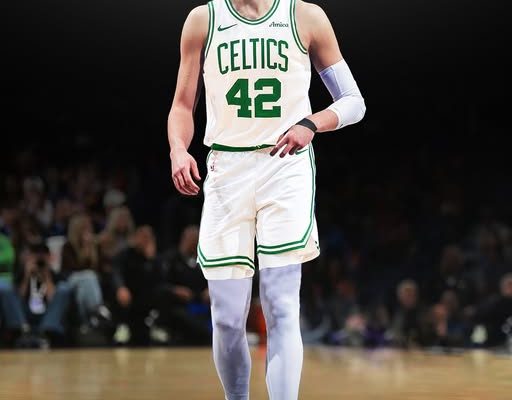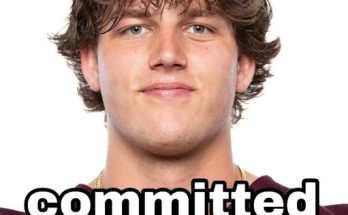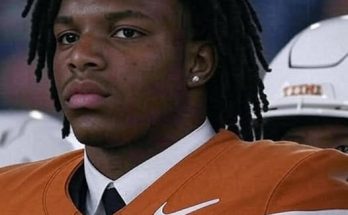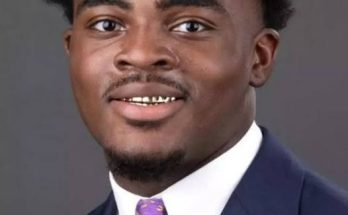The Boston Celtics are no strangers to bold roster moves. In recent years, they’ve executed trades and signings that have dramatically shifted the landscape of their championship aspirations, most notably the acquisitions of Kristaps Porziņģis and Jrue Holiday ahead of their 2024 NBA title run. But with age and injuries creeping into the roster, and the NBA’s grueling 82-game season continuing to test the depth of every elite team, the Celtics front office—led by Brad Stevens—might already be laying the groundwork for the next wave of defensive dominance. At the center of their newest strategic interest lies Utah Jazz big man Walker Kessler, a young, towering rim-protector who fits perfectly into Boston’s long-term vision as a potential successor to the aging Al Horford and injury-prone Kristaps Porziņģis.
At first glance, Kessler doesn’t have the offensive flash that someone like Porziņģis offers. He’s not a stretch big who will launch threes or demand double-teams in the post. But that’s not what the Celtics are currently searching for. They already have offensive versatility with Jayson Tatum, Jaylen Brown, Derrick White, and Porziņģis when healthy. What Boston needs is a long-term, mobile big who can anchor their defense in the paint, protect the rim without fouling, rebound consistently, and contribute as a vertical spacer and lob threat in pick-and-roll situations. Kessler fits that bill to perfection.
Since entering the league, Walker Kessler has carved out a niche as one of the NBA’s most promising young defensive centers. Standing at 7’0” with a 7’5” wingspan, he has elite shot-blocking instincts, strong timing, and the ability to stay vertical without overcommitting. During his rookie campaign with the Jazz, he averaged 2.3 blocks per game in just over 23 minutes, a staggering number for a first-year player. His per-36-minute metrics rivaled those of top-tier defensive bigs like Brook Lopez and Jaren Jackson Jr. It’s no surprise that defensive-minded teams have had their eyes on him ever since, especially given his team-friendly rookie-scale contract.
What makes Kessler particularly attractive to Boston is the timeline he fits. At just 23 years old, he is still years away from his physical prime but already producing at a high level. With Al Horford nearing 40 and Porziņģis already missing chunks of time due to chronic lower-body injuries, the Celtics are entering a transition phase in their frontcourt. Horford, while still effective in spurts and vital to the Celtics’ switch-heavy schemes, is not the reliable 30-minute-per-night player he once was. And while Porziņģis gives the Celtics unique spacing and interior scoring, his fragility cannot be overlooked, especially when the margin for error in postseason matchups is razor thin. Adding Kessler would allow Boston to load-manage their stars, maintain defensive integrity, and ensure that there’s always a reliable big man protecting the paint regardless of who else is available.
From a team-building standpoint, Boston’s interest in Kessler is both pragmatic and forward-looking. Defensive anchors who don’t require the ball, accept their role, and thrive in playoff environments are increasingly hard to find. Kessler, despite limited playoff experience, has the makings of someone who could thrive under such pressure. He has quick feet for his size, doesn’t get baited into foul trouble often, and has shown flashes of developing a short-range floater and push shot, even if his offensive game is still rudimentary. In the Celtics’ system, surrounded by elite perimeter defenders and ball-handlers, Kessler wouldn’t be tasked with creating offense. Instead, he’d thrive off dump-offs, lobs, and putbacks—just as players like Robert Williams III did before injuries hampered his consistency.
From Utah’s perspective, moving Kessler wouldn’t be an easy choice. The Jazz are in the middle of a rebuild, collecting young talent and stockpiling draft picks to engineer a future contender. Kessler, on his rookie deal, is a valuable piece both on the court and as a trade asset. However, league insiders believe Danny Ainge—Utah’s CEO of Basketball Operations and the former architect of Boston’s own title-contending core—is open to the idea of trading Kessler for the right price. The Jazz already have John Collins and Lauri Markkanen in their frontcourt, and with potential top-10 picks coming down the pipeline in the 2026 and 2027 drafts, Utah might see value in flipping Kessler for more shooting or perimeter scoring talent, particularly if it accelerates their rebuild timeline.
That’s where Boston’s treasure chest of tradeable assets becomes crucial. While the Celtics have moved a few first-round picks in the Holiday and Porziņģis deals, they still have ways to get creative. They can package a combination of pick swaps, second-rounders, young players like Sam Hauser or Payton Pritchard, and possibly even Malcolm Brogdon or other veterans whose contracts align with the CBA’s new matching salary requirements. Boston also has the appeal of offering Kessler an immediate role on a title-contending team, something Utah cannot currently provide.
There’s also a sense of continuity that makes the deal appealing. Brad Stevens has consistently built rosters with defensive versatility at the forefront. From trading for Robert Williams’ rights on draft night in 2018, to targeting Horford in free agency and re-acquiring him in 2021, to the Porziņģis-Horford tandem in 2023-24, Stevens has proven his affinity for having reliable, high-IQ bigs who can anchor Boston’s schemes. Kessler checks all those boxes, but with a longer runway. He could be the next in a long line of Celtics defensive stalwarts—following in the footsteps of Kevin Garnett, Kendrick Perkins, Horford, and Williams—while also offering upside that those predecessors didn’t always possess at such a young age.
One of the key elements to any potential Kessler trade is how the Celtics envision balancing their win-now mandate with long-term development. Unlike other rebuilding teams, Boston doesn’t have the luxury of giving minutes away to players who need seasoning. Every possession matters. Every defensive breakdown is magnified. But Kessler’s game is such that it’s built for plug-and-play scenarios. He doesn’t need touches to impact the game. His mere presence in the paint forces opponents to second-guess drives. He rotates smartly, challenges without fouling, and can switch in short bursts onto perimeter players. Under Joe Mazzulla’s evolving defensive schemes, which place a premium on rim deterrence and intelligent closeouts, Kessler could become the backbone of Boston’s second unit and perhaps even a starter by season’s end if Porziņģis’ injury history once again becomes a concern.



